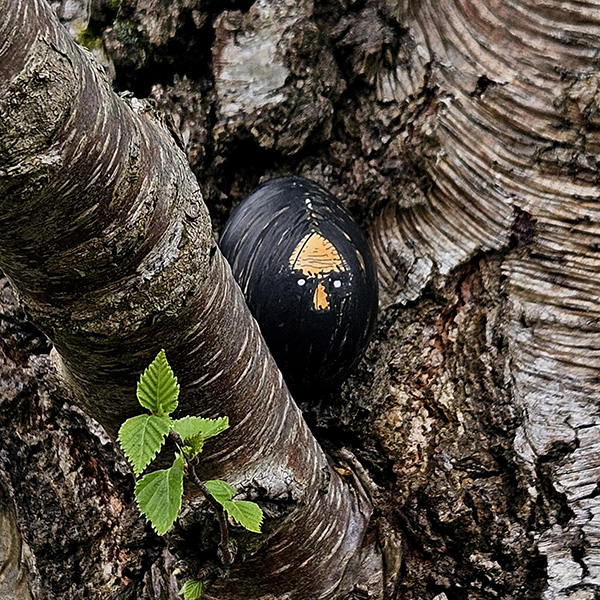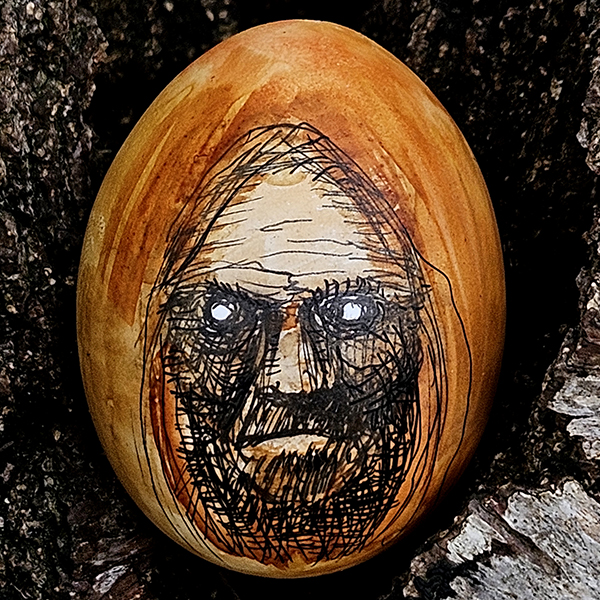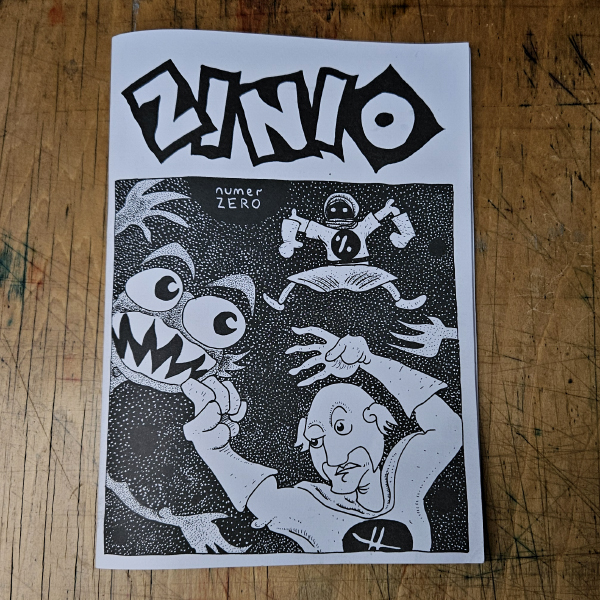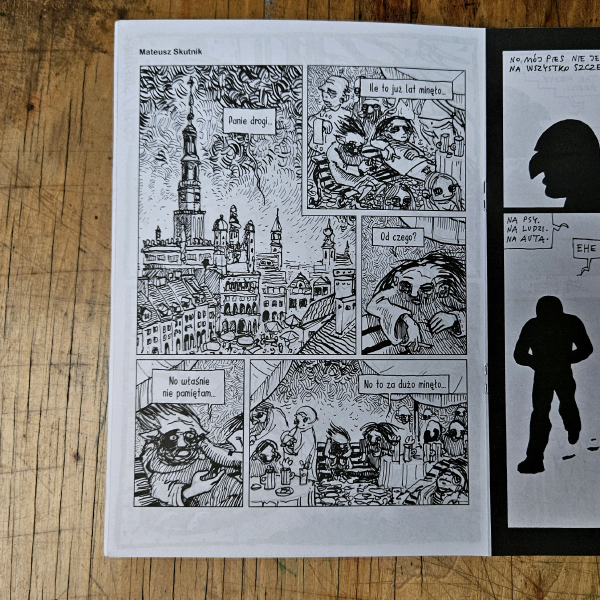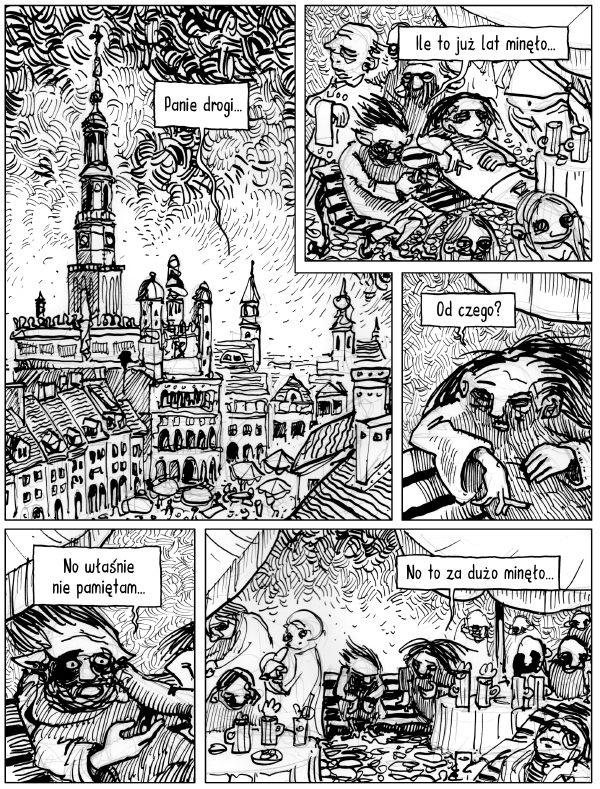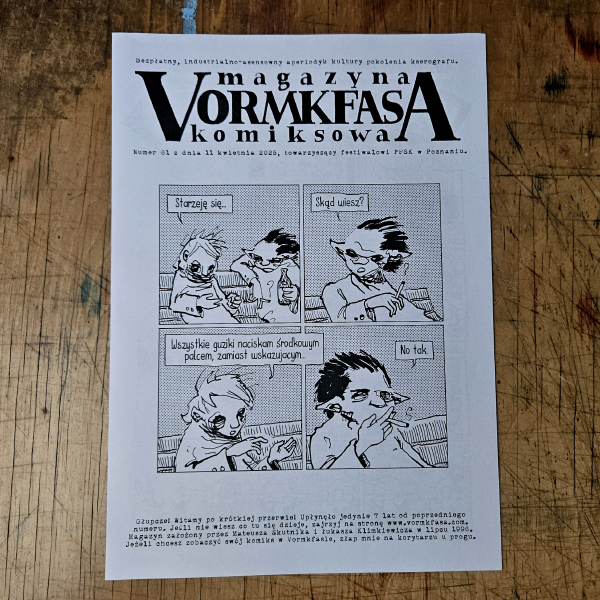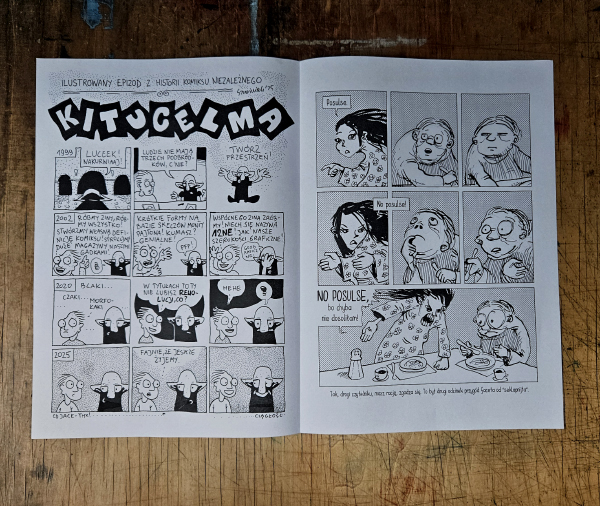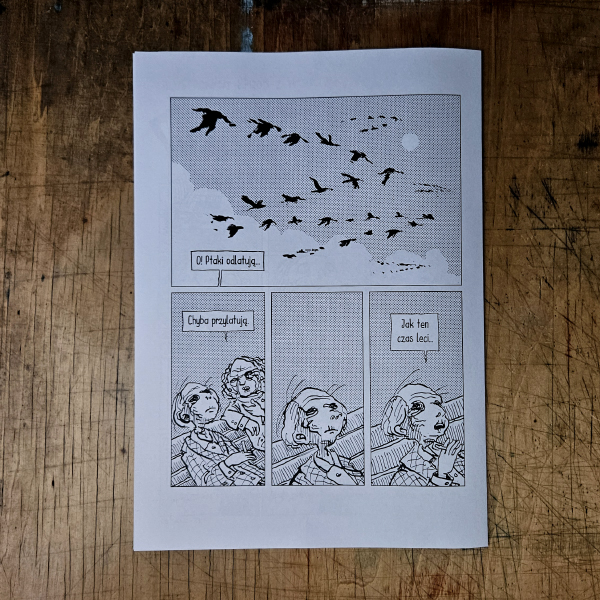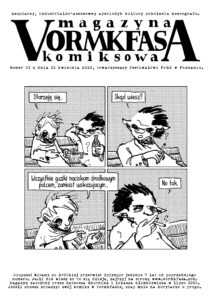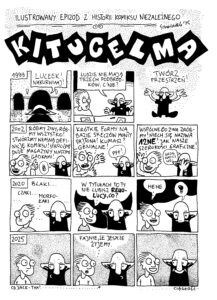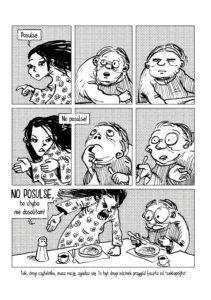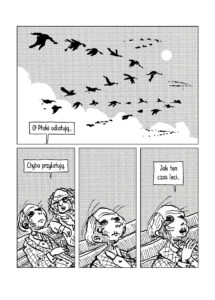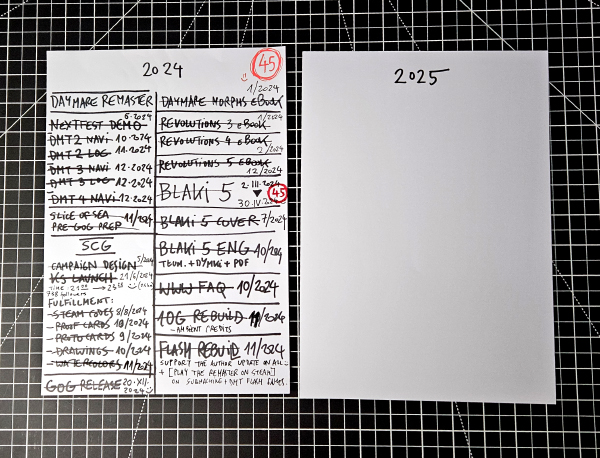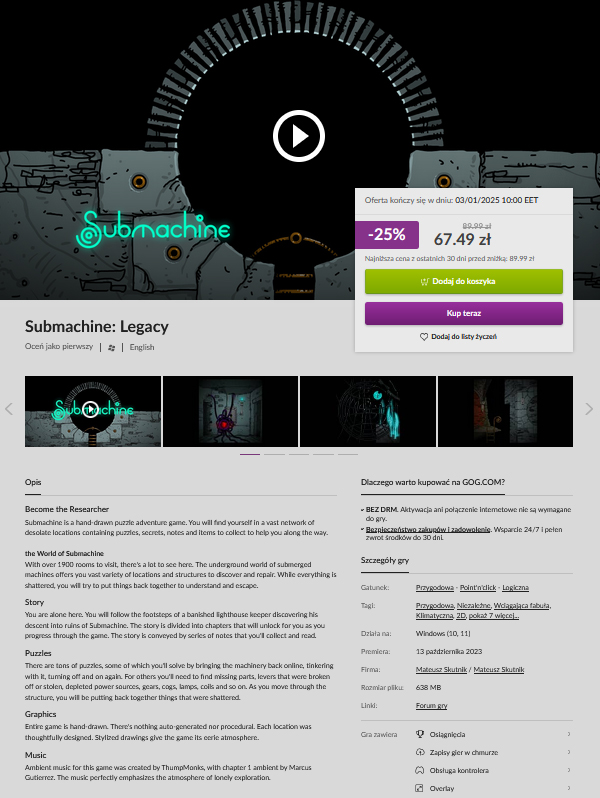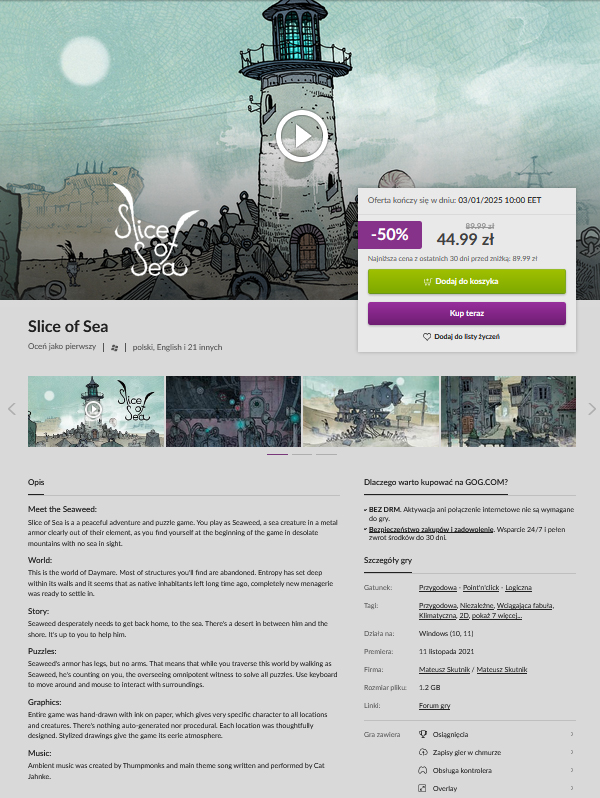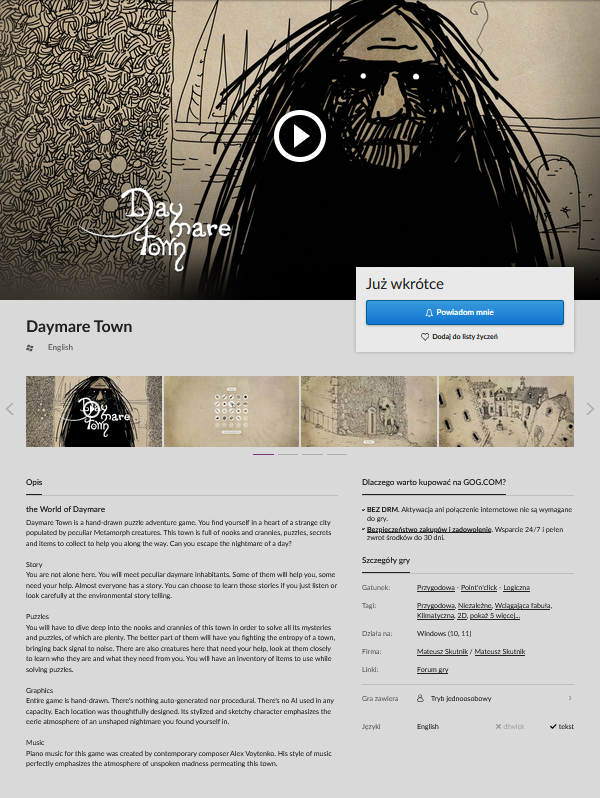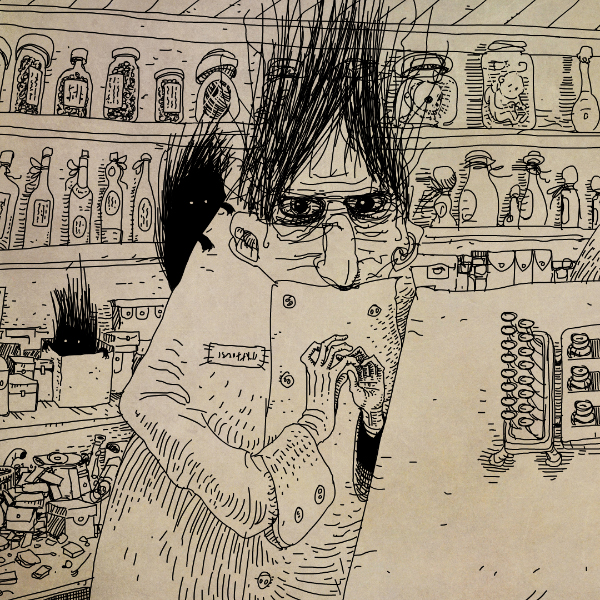Daymare remastered timestamp
June 27, 2025
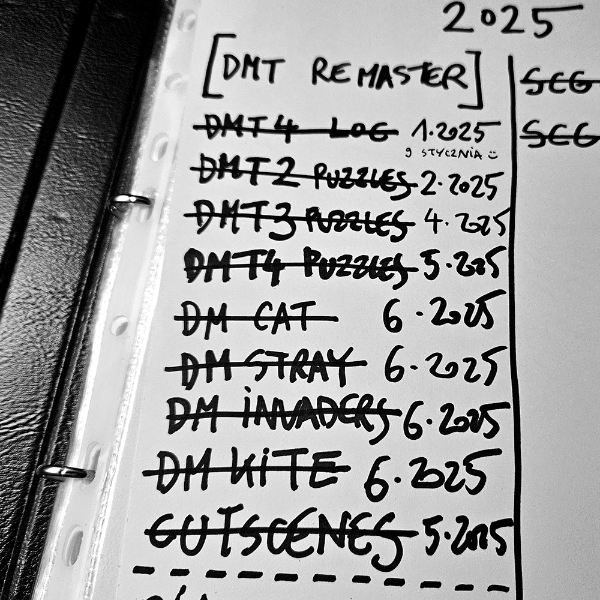
Everything that was ever created in the Daymare Town series is as of today remastered.
Every puzzle, location, minigame and animation.
Is this the end? No, not really.
Now the fun part begins.
New stuff, puzzles, locations, creatures, collectibles, achievements, lore and so on.
I will spend July and August expanding the game.
Unfortunately – I won’t be able to show you any of this…
Hang on! :D








 Czasami człowiek orientuje się, że czegoś mocno mu brakowało dopiero wtedy, kiedy ponownie się z tym czymś zetknie. Tak poczułem się w trakcie lektury “Ostatniego Blakiego” Mateusza Skutnika. Z pierwszym albumem o Panu Blakim (komiksy o nim współtworzył wtedy Karol Konwerski) polscy czytelnicy mogli się zapoznać już dwadzieścia lat temu. Krótkie historie o lubującym się w rozważaniach, ubranym na czarno jegomościu ze spiczastymi uszami ujmowały urokliwym zderzeniem filozofii ze życiem codziennym. Połączenie czarnego humoru i narzekań na codzienność z poetycką aurą zawsze wychodziły Skutnikowi znakomicie. “Blaki Czwórka” ukazał się w 2014 roku, więc większość z nas myślała, że autor już na zawsze porzucił swoje alter ego. Jednak oto mamy dowód, że postanowił wrócić do niego po raz ostatni (osobiście mam nadzieję, że to jednak nieprawda). Blaki jest odpowiednio starszy i jeszcze częściej myśli o przemijaniu oraz walce z poczuciem bezsensowności działań. Egzystencjalnego smutku jest tu więcej, ale pojawiają się także chwile zachwytu z najprostszych spraw, jak chociażby spędzania czasu z rodziną. Skutnik dalej potrafi świetnie uderzyć w sedno problemów “każdego z nas” używając do tego swojego charakterystycznego rzewnego stylu narracji. Bardzo lubię emocjonalny stan, w jaki wprawiają mnie te komiksy — coś pomiędzy “trochę z niego maruda” a “kurde, jednak ma chłop rację”. Polecam wrażliwcom, szczególnie tym miewającym problemy z wyrażaniem emocji wprost. Pan Blaki Was wszystkich rozumie. Mieszkańcy Gdańska Wrzeszcza mogą ten komiks docenić jeszcze bardziej, bo pewnie rozpoznają znajome uliczki i budynki.
Czasami człowiek orientuje się, że czegoś mocno mu brakowało dopiero wtedy, kiedy ponownie się z tym czymś zetknie. Tak poczułem się w trakcie lektury “Ostatniego Blakiego” Mateusza Skutnika. Z pierwszym albumem o Panu Blakim (komiksy o nim współtworzył wtedy Karol Konwerski) polscy czytelnicy mogli się zapoznać już dwadzieścia lat temu. Krótkie historie o lubującym się w rozważaniach, ubranym na czarno jegomościu ze spiczastymi uszami ujmowały urokliwym zderzeniem filozofii ze życiem codziennym. Połączenie czarnego humoru i narzekań na codzienność z poetycką aurą zawsze wychodziły Skutnikowi znakomicie. “Blaki Czwórka” ukazał się w 2014 roku, więc większość z nas myślała, że autor już na zawsze porzucił swoje alter ego. Jednak oto mamy dowód, że postanowił wrócić do niego po raz ostatni (osobiście mam nadzieję, że to jednak nieprawda). Blaki jest odpowiednio starszy i jeszcze częściej myśli o przemijaniu oraz walce z poczuciem bezsensowności działań. Egzystencjalnego smutku jest tu więcej, ale pojawiają się także chwile zachwytu z najprostszych spraw, jak chociażby spędzania czasu z rodziną. Skutnik dalej potrafi świetnie uderzyć w sedno problemów “każdego z nas” używając do tego swojego charakterystycznego rzewnego stylu narracji. Bardzo lubię emocjonalny stan, w jaki wprawiają mnie te komiksy — coś pomiędzy “trochę z niego maruda” a “kurde, jednak ma chłop rację”. Polecam wrażliwcom, szczególnie tym miewającym problemy z wyrażaniem emocji wprost. Pan Blaki Was wszystkich rozumie. Mieszkańcy Gdańska Wrzeszcza mogą ten komiks docenić jeszcze bardziej, bo pewnie rozpoznają znajome uliczki i budynki.
